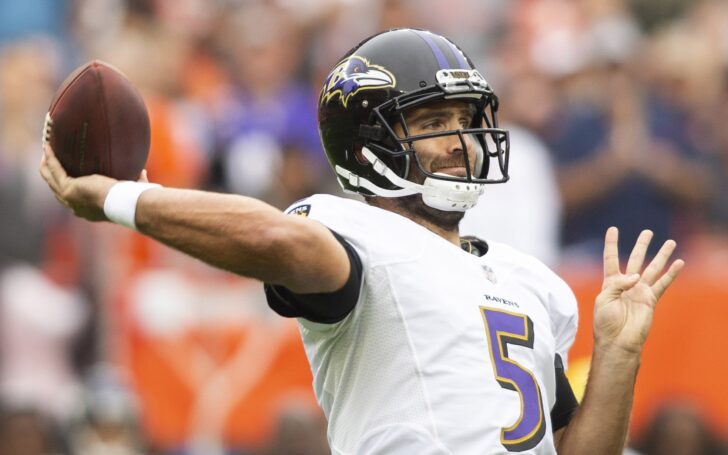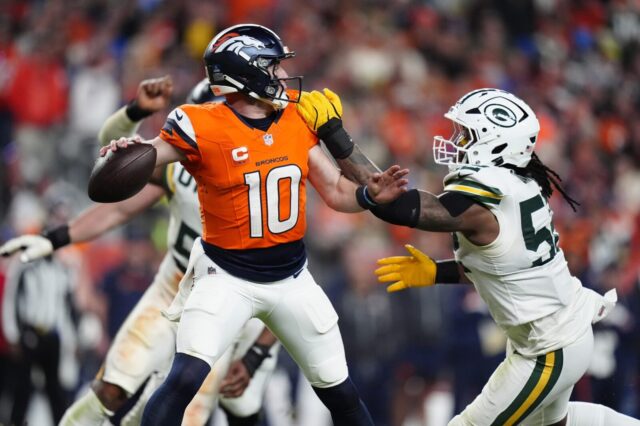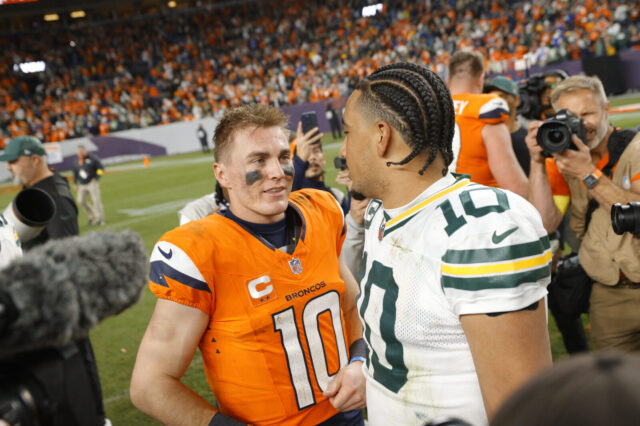“Chicks dig the long ball,” Greg Maddux.
As it turns out, fans of all backgrounds love the deep ball, whether it’s a 400-foot homer or a 50-yard bomb for a touchdown. Those huge plays are why people watch the NFL, hoping for excitement and amazing athleticism to be put on display for the world to see.
Believe it or not, while the Denver Broncos were one of the worst teams in the NFL last year — going 6-10 — they were one of the best in throwing the really deep ball. Yes, Case Keenum was a solid deep passer, especially when he threw the ball 41+ yards down the field, being the No. 1 in the entire league. Keenum went 8-of-9 on those 41+ yard throws in terms of accuracy (which accounts for a catchable ball, even if it’s dropped).
That number from Johnny Kinsley of brickwallblitz.com, who explored the 35 qualifying quarterbacks last year in terms of how accurate they are at throwing the deep ball. Keenum was also second-best in his throws between 36-40 yards (5-of-7), but overall, was a third-tier deep-ball passer. When combining all of his 20+ yard throws, Keenum was No. 25 in the league, with an accuracy score of 21-of-50, or 42 percent.
So, how did new starting quarterback Joe Flacco fare? He was 31st in the NFL in deep-ball accuracy, going a terrible 13-of-35 (37.1 percent). Where did Flacco excel? Well, he was sixth-best in the NFL in passes of 41+ yards (2-of-4) and he was fourth-best in deep balls going to the left (5-of-8, 62.5 percent).
Of course, it should also be noted that four of Flacco’s deep passes were dropped by his receivers, and that’s a high 11.4 percent of his attempts. But, another four of his deep passes were should-be interceptions which were dropped by defenders, too. Simply, Flacco’s receivers should be improved in Denver compared to Baltimore — especially if the Broncos keep Emmanuel Sanders — but Flacco also can’t throw the ball up and pray his teammate comes down with it.
Taking shots down field is what every fan hopes to see. When those deep balls are completed, excitement ensues and the offense can quickly move down field. And those deep throws keep the defense honest, allowing the run game to get going, which then sets up play-action.
But, interceptions not only end drives, they can be massive momentum swings and sink teams.
Simply, in 2018, Keenum was surprisingly a better deep-ball passer than was Flacco, which likely doesn’t elicit excitement in Broncos fans considering the offense didn’t attack down field nearly enough.
Explosive plays — those which go for 20-plus yards — aren’t just exhilarating, they’re also foundational when it comes to winning football games. Many fans will point to turnover differential as a key component to wins, but add in explosive plays (Toxic Differential) and the combination of stats is an even better predictor of who will escape victorious.
Former Baltimore Ravens coach Brian Billick coined the term “toxic differential” back in 2011 and it’s been a great indicator of wins since. In 2017, Denver enjoyed a +21 in explosive differential, but their -17 turnover differential left them at a +4 overall. The top-three that year were Minnesota (+53), New Orleans (+39) and Philadelphia (+35). Their combined records? 37-11 and they each won their respective division.
Offensively, the Broncos need Flacco to enjoy more completions of 20-plus yards, while the defense has to limit their opponents’ big plays. Covering tight ends this year must be a priority. If Flacco can improve his deep-ball passing, it bodes well for Denver’s 2019 chances because they already have one of the most explosive runners in the game with Phillip Lindsay. Lindsay had 30 runs of 10+ yards, which is categorized as explosive, in only his rookie year.
Finding a tight end will certainly help Flacco’s success this season, and the offensive line still needs to be addressed at two-three positions, but the Broncos’ offensive success may end up relying on the new quarterback’s deep-ball accuracy.
More Flacco numbers:
Where he’s hot and where he’s not: Flacco’s best areas of the field



